pros and cons of inboard brakes
#1
hey guys, my XJS has inboard brakes, and i was wondering if it would be worth it to change them over to outboard next time i need the pads changed. are there any upsides to inboard vs outboard? from what i can see it is only a lot harder to work on. I found other posts about inboard brakes but none discussing this haha. thanks guys!
#2
#3
Join Date: Mar 2008
Location: Pacific Northwest USA
Posts: 24,853
Received 10,908 Likes
on
7,168 Posts
Some guys have indeed taken an "Outboard" rear end assembly and swapped it in. Apparently it's fairly easy with not much more than some changes to brake pipes and parking brake cables. I don't don't how much a complete assembly will cost from a wrecking yard. Most of the outboard brake cars will have a differnet axle ratio, though. You may or may not want that...and you'll have to figure out how to recalibrate the speedometer reading.
But.....
On the inboard brakes changing the pads is no big deal. Lift the car, crawl under, pull the pins, remove pads, drop in the new ones. You'll spend more time lifting the car than changing the pads.
It's only when you need to change calipers and rotors that things get difficult. Most guys make a weekend out of it and drop the entire rear suspension, replace the calipers, pads, rotors and axle seals, if needed...and are "good to go" for another 10-15-20 years.
If such work was required every 2-3-4 years I'd feel much more strongly about swapping to outboard brakes but....it isn't :-)
More subjectively I think the inboard brake set-up is a marvel and one of the most interesting features of the car. I'd be reluctant to swap it out for something ordinary and commonplace just to make the car easier to repair every 10-15 years when it needs brake rotors or calipers. Jaguar's inboard brake IRS was standard-of-the-world for ages. It's the suspension others would've have loved to have if manufacturing expense was no issue.
Cheers
DD
But.....
On the inboard brakes changing the pads is no big deal. Lift the car, crawl under, pull the pins, remove pads, drop in the new ones. You'll spend more time lifting the car than changing the pads.
It's only when you need to change calipers and rotors that things get difficult. Most guys make a weekend out of it and drop the entire rear suspension, replace the calipers, pads, rotors and axle seals, if needed...and are "good to go" for another 10-15-20 years.
If such work was required every 2-3-4 years I'd feel much more strongly about swapping to outboard brakes but....it isn't :-)
More subjectively I think the inboard brake set-up is a marvel and one of the most interesting features of the car. I'd be reluctant to swap it out for something ordinary and commonplace just to make the car easier to repair every 10-15 years when it needs brake rotors or calipers. Jaguar's inboard brake IRS was standard-of-the-world for ages. It's the suspension others would've have loved to have if manufacturing expense was no issue.
Cheers
DD
#4
Did you guys over the water have the fabulous Rover P6? It came out in 63, but I had a 3500 S from 73 IIRC.
Inboard rear discs and 12 years before Jaguar brought out the XJS.
Should never, never have sold that car. Like an idiot I bought a BL SD1 and although a much later car, due to finances the company had regressed to rear drums.
Inboard rear discs and 12 years before Jaguar brought out the XJS.
Should never, never have sold that car. Like an idiot I bought a BL SD1 and although a much later car, due to finances the company had regressed to rear drums.
#5
Did you guys over the water have the fabulous Rover P6? It came out in 63, but I had a 3500 S from 73 IIRC.
Inboard rear discs and 12 years before Jaguar brought out the XJS.
Should never, never have sold that car. Like an idiot I bought a BL SD1 and although a much later car, due to finances the company had regressed to rear drums.
Inboard rear discs and 12 years before Jaguar brought out the XJS.
Should never, never have sold that car. Like an idiot I bought a BL SD1 and although a much later car, due to finances the company had regressed to rear drums.
#6
Agree fully with Doug's comment above but adding how much the American Hot Rod builder loves the rear suspension from these Jag's; chromed up and exposed expressing the mechanical beauty of this setup. I would keep the inboard setup and when new disks are needed , take the time to rebuild the rear suspension.
#7
Join Date: Mar 2008
Location: Pacific Northwest USA
Posts: 24,853
Received 10,908 Likes
on
7,168 Posts
That would be 1963.
But.....but...but
The XJS used the same IRS as the E-type which hit the market in 1961 ;-)
Cheers
DD
Trending Topics
#8
I'm new to the forum so apologies for the late post to an older thread. The inboard brakes reduction in unsprung weight may be of benefit in a racing car but has little benefit for a road going car. The cons far outweigh the pros in terms of accessibility and ease of maintenance. The last XJS (AJ6 engine May 1993 to end of production in 1996) used outboard brakes by employing the rear uprights/hub carriers and brakes of the XJ40. Most of the XJS had solid discs but a handful of the last 1996 units had the ventilated discs too. The differential casting was modified to enable two handbrake cable brackets to be mounted where the inboard discs would normally reside. The conversion of an inboard brake IRS unit to outboard brakes is relatively simple although a little ingenuity is needed to fabricate bracketry for the handbrake cables.
You can use the uprights/hub carriers and brakes from XJ40, X300, X 308 and XK8 up until 2001. If you have a 61 3/4" wide rear end then you can simply take the whole brake, upright and half shaft assembly and swap them out - hey presto, instant major braking improvement. Any 1961 - 1986 (Daimler 420DS and XJS to mid 1993) can be easily and cheaply upgraded to 4 piston caliper ventilated outboard brakes in a couple of hours and the benefits far outweigh the disadvantage of reduced unsprung weight. For narrower IRS units - E Type S1, S II, S III, original S Type, 420 just swap the upright/hub carrier assembly and mate to your existing half shafts. I have a couple of these outboard braked XJS IRS units and a couple of inboard brake units as well as some half shaft, upright brake assemblies from an XK8 to convert the earlier units. The car in my avatar is being hot rodded with outboard braked XJS rear IRS, IFS and an XK 6 engine replete with a trio of Webers, so this information is based on hands on experience.
You can use the uprights/hub carriers and brakes from XJ40, X300, X 308 and XK8 up until 2001. If you have a 61 3/4" wide rear end then you can simply take the whole brake, upright and half shaft assembly and swap them out - hey presto, instant major braking improvement. Any 1961 - 1986 (Daimler 420DS and XJS to mid 1993) can be easily and cheaply upgraded to 4 piston caliper ventilated outboard brakes in a couple of hours and the benefits far outweigh the disadvantage of reduced unsprung weight. For narrower IRS units - E Type S1, S II, S III, original S Type, 420 just swap the upright/hub carrier assembly and mate to your existing half shafts. I have a couple of these outboard braked XJS IRS units and a couple of inboard brake units as well as some half shaft, upright brake assemblies from an XK8 to convert the earlier units. The car in my avatar is being hot rodded with outboard braked XJS rear IRS, IFS and an XK 6 engine replete with a trio of Webers, so this information is based on hands on experience.
Last edited by guido36; 11-10-2013 at 09:24 AM.
#9
#10
It might be helpful to post some photos of the outboard rear - here is the differential with the hand brake cable brackets:
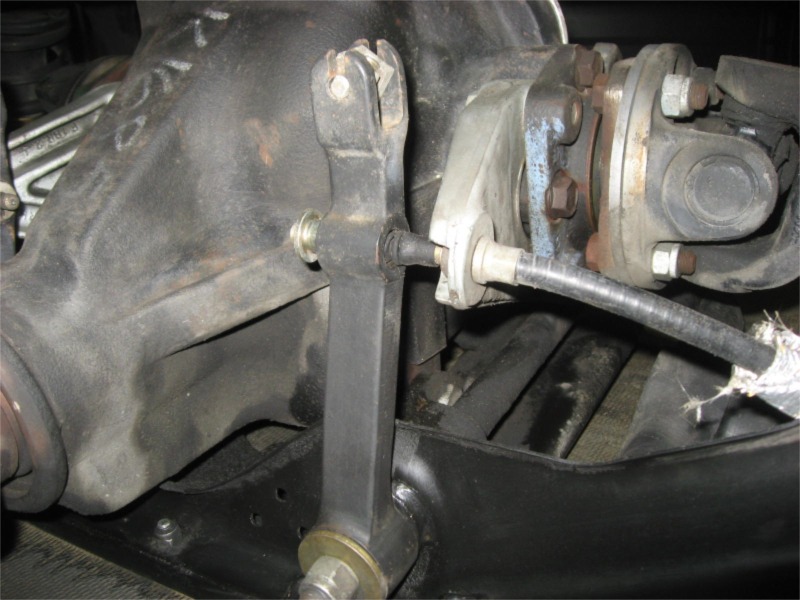
Here is the outboard brake IRS assembly:
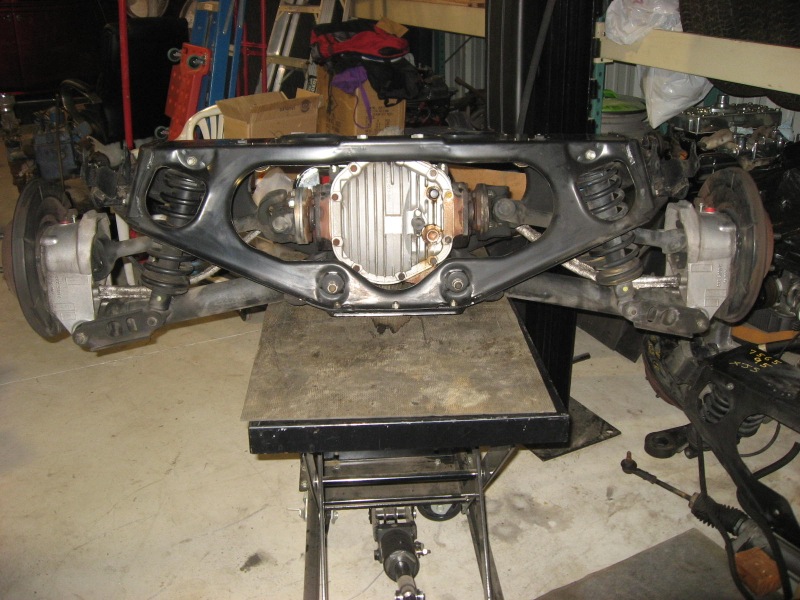
View from the front:
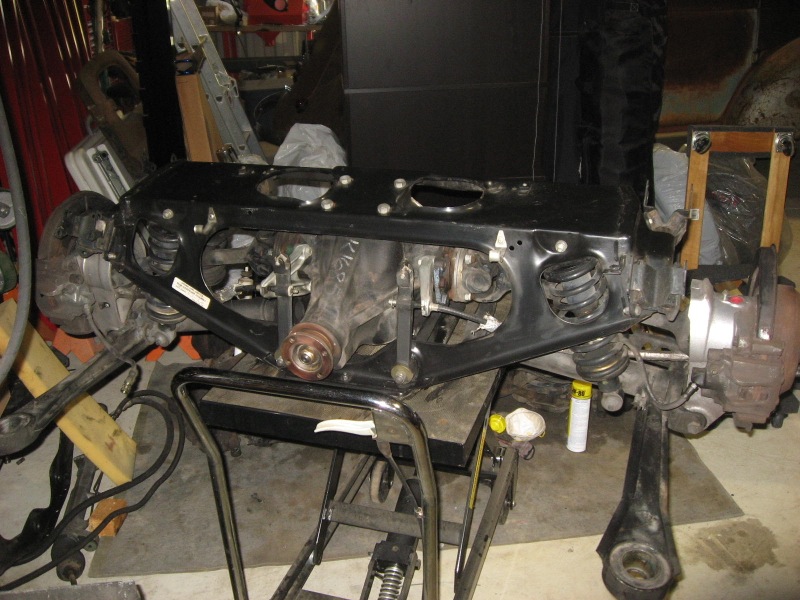
Upright with brakes and half shaft:
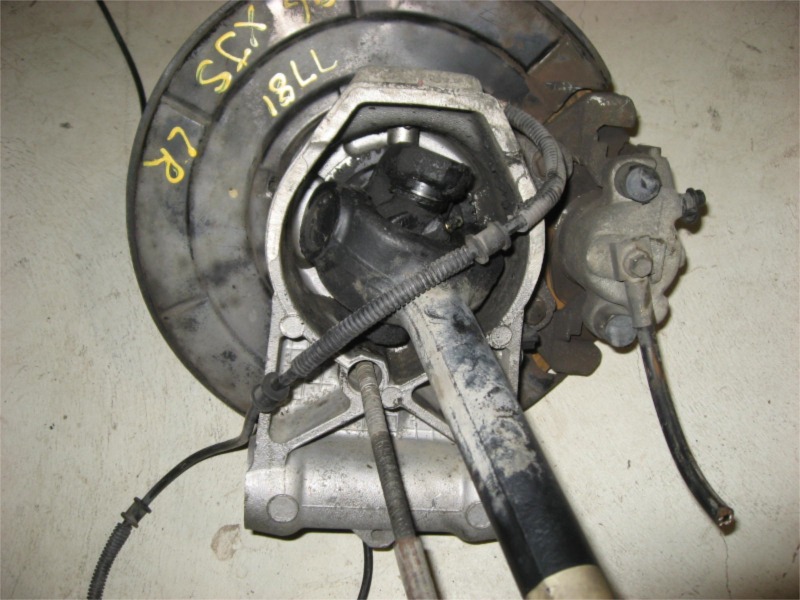
Another view - this is what you need for the conversion from inboard to outboard brakes - the half shaft is optional but makes the swap easier if you have a 61-3/4" wide IRS. For narrower IRS units just use your original half shafts and mate them to the upright/outboard brake assembly:
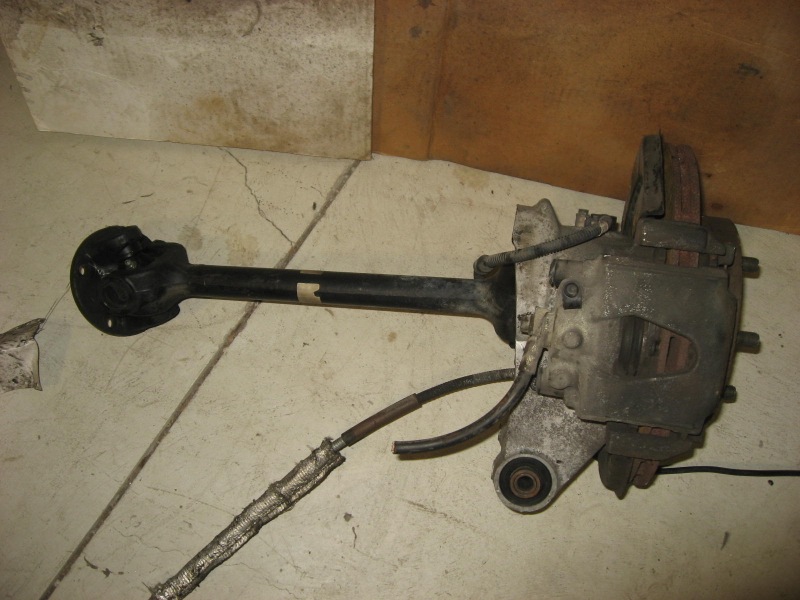
As I mentioned in my earlier post you can get these uprights/brakes/half shafts from XJ40 X300, X308 and XK8 models up to 2001.

Here is the outboard brake IRS assembly:

View from the front:

Upright with brakes and half shaft:

Another view - this is what you need for the conversion from inboard to outboard brakes - the half shaft is optional but makes the swap easier if you have a 61-3/4" wide IRS. For narrower IRS units just use your original half shafts and mate them to the upright/outboard brake assembly:

As I mentioned in my earlier post you can get these uprights/brakes/half shafts from XJ40 X300, X308 and XK8 models up to 2001.
#12
Hello,
Advantages
Packaging: a larger brake disc can be used without it being inside the wheel as a result less rotating mass as the wheel can be smaller.
Heat: brake dust and higher temps can be separate from the tires improved roll centers, improved inertia, improved front brake cooling solid fixed brake lines can be used.
Sprung Mass: is lowered meaning ride can be softer, less time is spent overcoming the inertia of the suspension and more is put on the tires.
Disadvantages of this system
Heat: rear brakes where notoriously bad at cooling, not aided by poor aero of the time as well as the fact that it is mounted in a confined space under the vehicle
Packaging: area around the rear differential will need to be bigger.
Torque: the distance from the tire to the brake disc has significantly increased, meaning that any force will cause distortion in the drive/half shafts.
Advantages
Packaging: a larger brake disc can be used without it being inside the wheel as a result less rotating mass as the wheel can be smaller.
Heat: brake dust and higher temps can be separate from the tires improved roll centers, improved inertia, improved front brake cooling solid fixed brake lines can be used.
Sprung Mass: is lowered meaning ride can be softer, less time is spent overcoming the inertia of the suspension and more is put on the tires.
Disadvantages of this system
Heat: rear brakes where notoriously bad at cooling, not aided by poor aero of the time as well as the fact that it is mounted in a confined space under the vehicle
Packaging: area around the rear differential will need to be bigger.
Torque: the distance from the tire to the brake disc has significantly increased, meaning that any force will cause distortion in the drive/half shafts.
Thread
Thread Starter
Forum
Replies
Last Post
xjrjag
X-Type ( X400 )
4
09-24-2015 10:08 PM
Currently Active Users Viewing This Thread: 1 (0 members and 1 guests)



